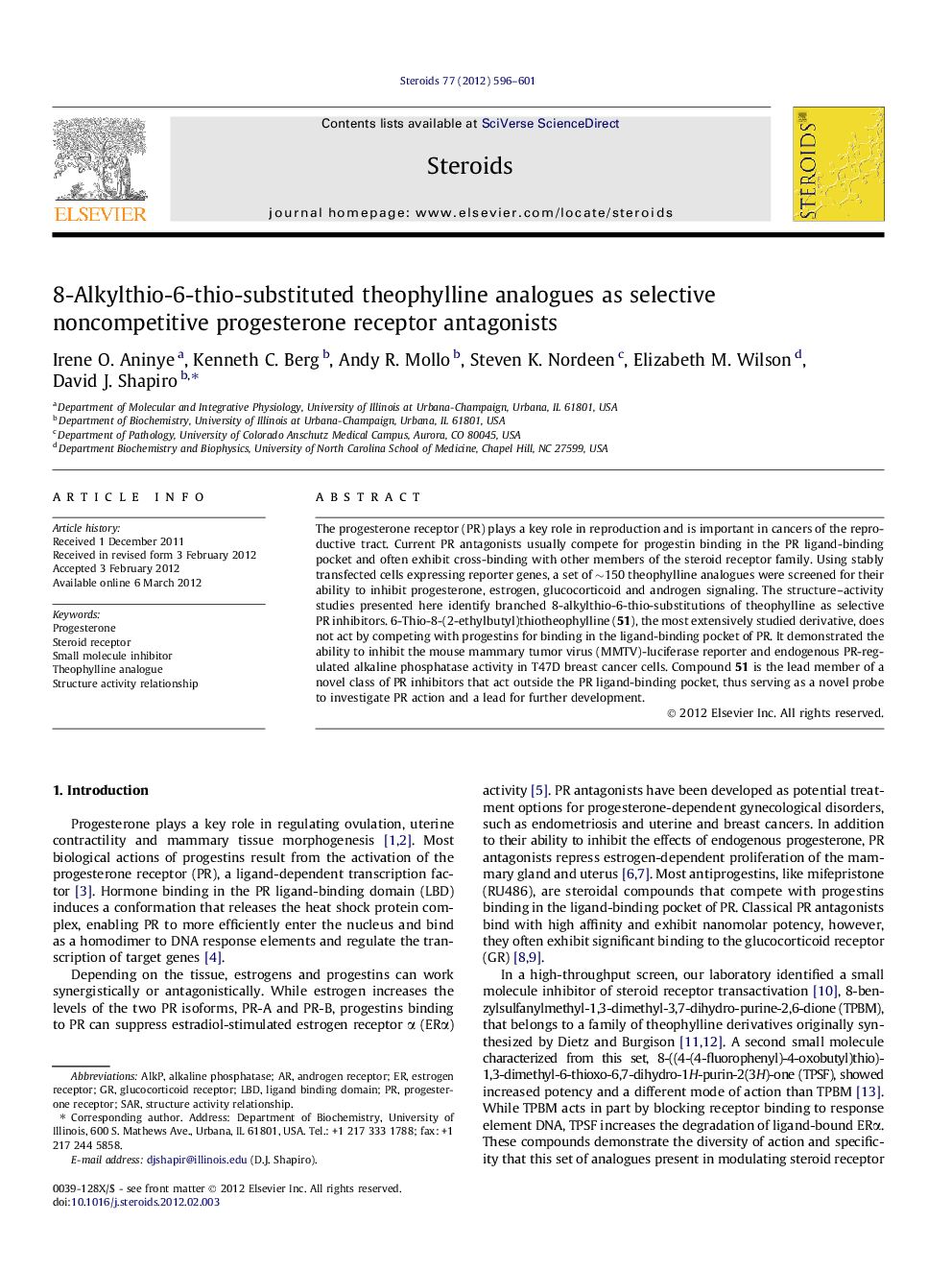| Article ID | Journal | Published Year | Pages | File Type |
|---|---|---|---|---|
| 2028045 | Steroids | 2012 | 6 Pages |
The progesterone receptor (PR) plays a key role in reproduction and is important in cancers of the reproductive tract. Current PR antagonists usually compete for progestin binding in the PR ligand-binding pocket and often exhibit cross-binding with other members of the steroid receptor family. Using stably transfected cells expressing reporter genes, a set of ∼150 theophylline analogues were screened for their ability to inhibit progesterone, estrogen, glucocorticoid and androgen signaling. The structure–activity studies presented here identify branched 8-alkylthio-6-thio-substitutions of theophylline as selective PR inhibitors. 6-Thio-8-(2-ethylbutyl)thiotheophylline (51), the most extensively studied derivative, does not act by competing with progestins for binding in the ligand-binding pocket of PR. It demonstrated the ability to inhibit the mouse mammary tumor virus (MMTV)-luciferase reporter and endogenous PR-regulated alkaline phosphatase activity in T47D breast cancer cells. Compound 51 is the lead member of a novel class of PR inhibitors that act outside the PR ligand-binding pocket, thus serving as a novel probe to investigate PR action and a lead for further development.
► SAR of theophylline analogues against four major steroid receptors. ► Novel motif preferentially inhibits progesterone receptor activity. ► Inhibitor is pure antagonist of PR-mediated reporter and endogenous gene activity. ► Compound 51 does not display the properties of a competitive ligand.
